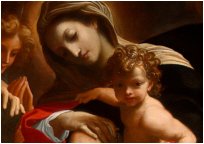
© StGemma.com Web Productions Inc. 2005-2011. All rights reserved.
|
Home The Life Of Christ/The Christian Cross What The Talmud Teaches About Christians Christians Unworthy To Associate With Jews Christians To Be Harmed Indirectly Christians To Be Harmed Directly Appendix - How The Pope Treated The Jews Gregory XVII "Siri" The Pope in Red The Coming Great Catholic Monarch St. John Bosco's Dream (Vision) of Hell Antichrist (Catholic Prophecy)
|
As to the origin of the Talmud, the Rabbis(6) regard Moses as its first author. They hold that, besides the written law which Moses received from God on Mount Sinai on tables of stone, which is called Torah Schebiktab, he also received interpretations of it, or the oral law, which is called Torah Shebeal Peh. They say that this is the reason why Moses remained so long on the mountain, as God could have given him the written law in one day.(7)
Moses is said to have transmitted this oral law to Joshua; Joshua in turn to the seventy Elders; the Elders to the Prophets, and the Prophets to the Great Synagogue. It is held that it was later transmitted successively to certain Rabbis until it was no longer possible to retain it orally. Whatever may be said about this story of the Rabbis, it is sufficiently known to us that before the birth of Christ, schools existed in Palestine in which sacred literature was taught. The commentaries of the Doctors of the law were noted down on charts and lists as an aid to memory, and these, when collected together, formed the beginnings of the Jewish Talmud. In the second century after Christ, Rabbi Jehuda who, because of the sanctity of his life, was called The Saint, and The Prince, realizing that the learning of the Jews was diminishing, that their oral law was being lost, and that the Jewish people were being dispersed, was the first to consider ways and means of restoring and preserving their oral law. He collected all the lists and charts and from them he made a book which was called the Sepher Mischnaioth, or Mischnah — a Deuterosis, or secondary law. He divided it into six parts, each of which was divided into many chapters. We shall consider these later. The Mischnah is the foundation and the principal part of the whole Talmud. This book was accepted by the Jews everywhere and was recognized as their authentic code of law. It was expounded in their Academies in Babylon — at Sura, Pumbaditha and Nehardea — and in their Academies in Palestine — at Tiberias, Iamnia and Lydda. As the interpretations increased with the passing of time, the disputations and decisions of the doctors of the law concerning the Mischnah were written down, and these writings constituted another part of the Talmud called the Gemarah. These two parts are so disposed throughout the whole Talmud that the Mischnah serves first as a kind of text of the law, and is followed by the Gemarah as an analysis of its various opinions leading to definite decisions. All the precepts of the Mischnah, however, were not discussed in the Jewish schools. Those whose use was nullified by the destruction of the Temple, and those whose observation was possible only in the Holy Land were not commented upon. Their explanation was left until the coming of Elias and the Messiah. For this reason some parts of the Mischnah are lacking in the Gemarah. In interpreting the Mischnah of Rabbi Jehuda, the schools of Palestine and Babylon followed each their own method, and by thus following their own way gave rise to a twofold Gemarah — the Jerusalem and the Babylonian versions. The author of the Jerusalem version was Rabbi Jochanan, who was head of the synagogue in Jerusalem for eighty years. He wrote thirty-nine chapters of commentaries on the Mischnah which he completed in the year 230 A.D. The Babylonian Gemarah, however, was not compiled by any one person, nor at any one time. Rabbi Aschi began it in 327 A.D and labored over it for sixty years. He was followed by Rabbi Maremar about the year 427 A.D., and it was completed by Rabbi Abina about the year 500 A.D. The Babylonian Gemarah has thirty-six chapters of interpretations. This twofold Gemarah, added to the Mischnah, makes also a twofold Talmud: The Jerusalem version, which, on account of its brevity and obscurity, is not much used; and the Babylonian version, which has been held in the highest esteem by Jews of all times. The Gemarah is followed by additions called Tosephoth.(8) It was thus that Rabbi Chaia first styled his opinions on the Mischnaioth. He and Rabbi Uschaia were the first to explain this book publicly in the schools. Commentaries on the Mischnah which were made by the doctors outside the schools were called Baraietoth,(9) or extraneous opinions.
These Commentaries were further supplemented by other decisions called Piske Tosephoth, short theses and simple principles. For nearly five hundred years after the Babylonian Talmud was completed, the study of literature was greatly hampered partly due to public calamities and partly owing to dissensions among the scholars. But in the eleventh century others wrote further additions to the Talmud. Chief among these were the Tosephoth of Rabbi Ascher. Besides these there appeared the Perusch of Rabbi Moische ben Maimon, called by the Jews Rambam for short, by the Christians Maimonides, and by Rabbi Schelomo, Iarchi or Raschi. Thus, the Mischna, Gemarah, Tosephoth, the marginal notes of Rabbi Ascher, the Piske Tosephoth and the Perusch Hamischnaioth of Maimonides, all collected into one, constitute a vast work which is called the Talmud.
|
